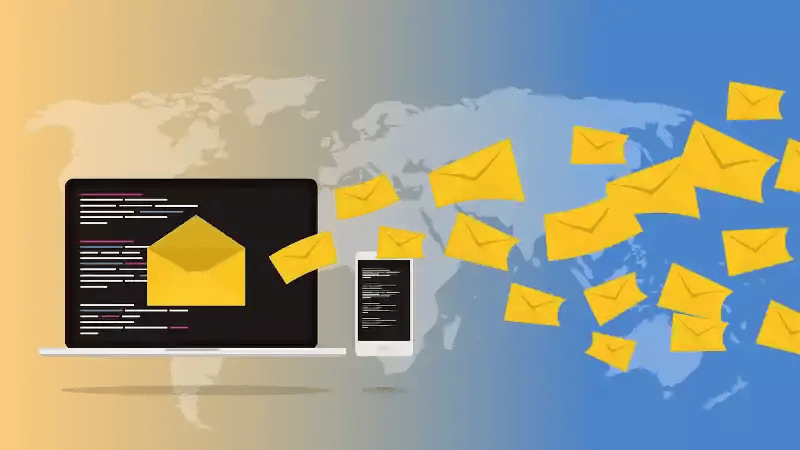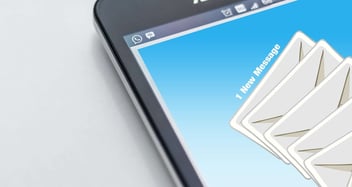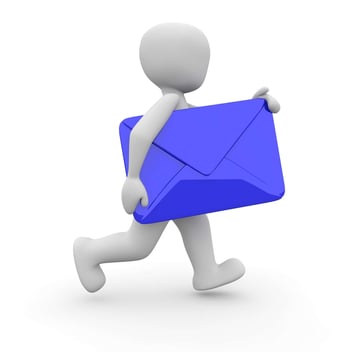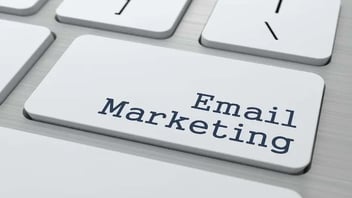Inviare o non inviare un email blast
I messaggi di posta elettronica sono forse uno dei pezzi più controversi del puzzle del marketing. Alcuni giurano sulla loro efficacia, ma altri ne deridono la natura di spam e i bassi numeri di coinvolgimento. Chi ha ragione?

Alcuni vi diranno che l'e-mail è un mezzo di comunicazione in via di estinzione e che non bisogna preoccuparsi.
Prima di tutto, stronchiamo questo mito pernicioso sul nascere. L'e-mail non è affatto una tecnologia in via di estinzione, nemmeno lontanamente. Ci sono 4,25 miliardi di utenti attivi in tutto il mondo e negli ultimi quattro anni il traffico giornaliero di e-mail è aumentato del 5% all'anno.
Ok, quindi l'e-mail è qui per restare. Cosa significa questo per la domanda del titolo: Fare o non fare blasting? Ci odiereste se vi dicessimo: "Dipende"? Vediamo qual è il giusto approccio all'Email Marketing.
Ecco il nostro processo in tre fasi, facile da seguire, per determinare se il blasting via e-mail è fattibile per voi e per la vostra situazione di marketing unica. Esaminate le vostre campagne attuali e quelle in fase di sviluppo. Esaminatele attraverso questi passaggi. Una volta eseguiti tutti i passaggi, potrete decidere se un email blast vi aiuterà a raggiungere il vostro piano di marketing e i vostri obiettivi.
Fase 1: Che cos'è un email blast?
Non è solo un'e-mail di gruppo? Cosa c'è di così controverso? Sì e no, e ci arriviamo subito. Secondo il leader del settore Hubspot, un email blast è definito come:
"... un messaggio di posta elettronica generico inviato a un'enorme lista di destinatari non segmentati. Figlio manifesto dell'approccio di marketing spray-and-pray, l'email blast è solitamente considerato spam".
Le parole chiave sono "generico" e "non segmentato". Vi siete mai chiesti perché quell'azienda da cui avete comprato un widget anni fa vi sta ancora inviando e-mail su un altro prodotto assolutamente non correlato? Perché si sta impegnando in un'attività di email marketing di massa e sta inviando quel messaggio a tutto il suo database di contatti, indipendentemente dalla sua rilevanza per una persona o un segmento di pubblico in particolare.
Confrontate questa situazione con una campagna di email curata con versioni personalizzate di quel messaggio. In questo modo, il nuovo prodotto viene pubblicizzato solo alle persone che hanno acquistato l'ultima versione dello stesso prodotto. Alcuni esperti di marketing diranno che si tratta fondamentalmente della stessa cosa. Non siamo assolutamente d'accordo. Le e-mail accuratamente personalizzate hanno tassi di coinvolgimento più elevati e le e-mail di gruppo inviate a liste più piccole e accuratamente segmentate hanno anche meno probabilità di attivare i filtri automatici antispam.
Ciascun metodo può trovare posto in una campagna di marketing moderna e ben strutturata; a seguire, esamineremo i pro e i contro per aiutarvi a decidere se la vostra campagna può trarre vantaggio da un blast.
Fase 2: Considerare i pro di un blast di e-mail
Il primo e più importante aspetto positivo è la portata. Quanto è grande la vostra lista completa di contatti? Questa è la portata potenziale di un e-mail blast. Per alcuni aggiornamenti aziendali, questa è davvero l'opzione migliore.
Avete una nuova funzione che volete far conoscere a tutti? Mandatela in onda.
I messaggi di posta elettronica sono anche un modo fantastico per raccogliere il feedback degli utenti: basta inviare un sondaggio o un'indagine a tutti e raccogliere un campione trasversale di risposte per verificare il polso della vostra base di utenti. Considerate questa opzione per progetti di ricerca interni o per raccogliere dati per un whitepaper. Questi casi d'uso traggono vantaggio da una visione non segmentata, e non c'è modo migliore per ottenerla di un'esplosione su larga scala.
Fase 3: considerare i contro dello stesso invio di e-mail
Ricordate che i vostri clienti non sono un pilastro monolitico di uniformità. Avete prodotti e servizi diversi, e gli utenti di ciascuno di essi probabilmente variano quanto o più delle offerte. Ci sarà sicuramente un cross-over, ma la base di utenti di ciascun prodotto deve essere considerata un segmento unico.
Al giorno d'oggi, fino all'85% delle e-mail è considerato spam. Ciò significa che più email indesiderate, non richieste o inappropriate una persona riceve da voi, più è probabile che si disimpegni o che le segni come spam e passi oltre. Ogni volta che qualcuno lo fa, la reputazione del vostro mittente ne risente. La reputazione del mittente è un insieme di parametri che gli ISP e i provider di posta elettronica utilizzano per determinare quali mittenti autorizzare, quali inviare allo spam o, peggio, inserire completamente nella blacklist.
È probabile che nella vostra lista di contatti ci siano dei non clienti. Investitori, organizzazioni partner o fornitori non hanno bisogno di sapere l'ultimo aggiornamento della vostra offerta. E con il volume di e-mail che probabilmente vedranno ogni giorno, potrebbero offendersi se ricevono un rumore indesiderato nella loro casella di posta.
I sondaggi e le indagini di cui sopra? Considerate quanto potrebbero essere diversi i tassi di risposta se inviaste versioni leggermente diverse a ciascun segmento della vostra lista. I messaggi personalizzati registrano universalmente tassi di apertura più elevati, il che può migliorare notevolmente la reputazione del mittente.
Passo 4: le migliori pratiche di blasting
Dopo aver seguito le tre fasi precedenti, potreste decidere che l'uso oculato dei blast di e-mail ha senso per la vostra campagna attuale. Bene. Ci fate un favore? Seguite alcune best practice. Queste assicurano che non si subiscano conseguenze negative (come un abbassamento della reputazione del mittente) e possono persino contribuire a migliorare i risultati.
-
Mantenete ogni messaggio breve e diretto
-
Assicuratevi che l'oggetto del messaggio corrisponda al contenuto che segue.
-
Arrivare rapidamente al contenuto
-
Includete una CTA in alto
-
Assicuratevi che l'opzione di cancellazione sia chiara e facile da trovare
-
Assicuratevi che il vostro sito web e la formattazione delle e-mail siano adatti ai dispositivi mobili; oltre la metà di tutte le e-mail viene letta su dispositivi mobili.
La nostra risposta un po' sarcastica "dipende" ha più senso ora? Ci sono momenti e luoghi in cui un'email blast ben pianificata può fare miracoli per le vostre campagne, fornendo il calcio d'inizio necessario per far partire una campagna a pieno regime.
E ci sono momenti e luoghi in cui anche il blast più ben congegnato e con le migliori intenzioni non può far altro che allontanare i clienti e rovinare la reputazione del mittente per le future campagne e-mail.
In definitiva, la decisione spetta a voi per mantenere la vostra lista di e-mail. Ci auguriamo che questo articolo vi abbia dato spunti di riflessione e vi aiuti a prendere una decisione informata quando arriva il momento di rispondere alla domanda "fare o non fare un email blast".
Questo contenuto è disponibile in:
- Tedesco: E-Mail-Blast oder nicht E-Mail-Blast
- Inglese: To Email Blast or Not to Email Blast
- Spagnolo: Email Blast o no Email Blast
- Francese: Envoyer ou ne pas envoyer des courriels - email blast
- Rumeno: Trimiterea E-mailurilor de Tip Blast: Ghid pentru Decizii Informate
- Cinese: 要不要进行电子邮件群发









Facci sapere cosa ne pensi.